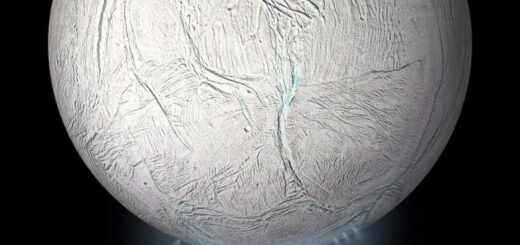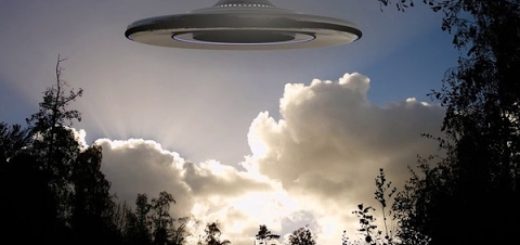Aboriginal Australians Co-Existed With The Megafauna For At Least 17,000 Years
– Australia was once home to giant reptiles, marsupials and birds (and some not so giant), but the extinction of this megafauna has been the subject of a debate that has persisted since the 19th century.
Despite great advances in the available scientific techniques for investigating the problem, answering the key question of how they became extinct has remained elusive.

Indeed, the same questions as those asked in the 19th century by scientists, such as the British comparative anatomist Sir Richard Owen and the Prussian scientist and explorer Ludwig Leichhardt, remain: were people responsible for their demise or was it climate change?
Our new research, published in the latest Quaternary Science Reviews journal, shows that early humans to Australian lived alongside some of the megafauna for many thousands of years before the animals became extinct.
Many researchers have previously argued that the megafauna became extinct soon after the arrival of the First Australians.
For example, it has been argued that perhaps firing of the landscape dramatically altered ancient Australia’s ecology. One species in particular, the giant flightless bird Genyornis newtoni was investigated and shown to have succumbed to significant habitat change and direct predation.
But the hypothesis for Genyornis‘ extinction has come under significant criticism due to the emergence of counter evidence. Firstly the egg shells thought to be from Genyornis are considered by leading palaeontologists to perhaps be from a much smaller megapode.
The evidence for firing of the landscape, as studied through the genomes of fire sensitive plants, shows no record of plants going through genetic bottlenecks as a result of significant firing events.
It seems that Aboriginal populations may not have been that large until much later in prehistory. Our genomic research has revealed that significant demographic changes did not occur until some 10,000 years ago. The genomic evidence suggests that for tens of thousands of years, Aboriginal populations were not that large.
More careful analysis of the record often reveals a very different picture.
Critical to understanding when the megafauna became extinct is dating, and ideally, the application of multiple dating techniques will provide the finest resolution. If two different dating techniques arrive at similar dates, then this is a very good sign for the age of a species.
In recent years it has been suggested there are very few good dates for the extinction of megafauna. Some have argued that it is possible many of the 45 or so megafauna species thought to have become extinct after 50,000 years ago may have in fact slipped into the extinction abyss tens of thousands of years before the First Australians arrived.
One way of testing the various extinction models is by looking for megafauna in landscapes that show continuous Aboriginal occupation over the past 50,000 years. These landscapes should ideally also have conditions for the preservation of fossil bones.
There are very few localities like this but one exception in Australia is the Willandra Lakes World Heritage Area, in New South Wales.
If we can show that megafauna disappear soon after the arrival of the First Australians, then we have support for the rapid extinction model. If we show that megafauna and people co-existed for many years, then we may have to seek other explanations for their demise.
In theory this sounds quite straightforward, but unfortunately it is far from the case. While there are megafauna fossils found across the Willandra landscape, many of these have eroded out of their original burial contexts.
We can get age estimates on these fossils using uranium series (U-series) dating, but they only represent minimum age estimates. If we can find fossils still encased within their original sediments, then we can date the age of the sand grains using a technique called optically stimulated luminescence dating (OSL for short).
By dating the fossil directly with U-series we arrive at a minimum age estimate. By dating the sand grains that a fossil is found in we arrive at the maximum age range.
Unfortunately carbon dating does not work within the Willandra for megafauna fossils as there never seems to be enough collagen left in the bone to obtain a carbon date.
After much field work spread over a number of years we had very little luck in finding in situ fossils. We found numerous specimens, but these were often isolated bones sitting on eroded surfaces.
But one specimen found a few decades before our search did provide an excellent dating opportunity.
Zygomaturus trilobus was a large lumbering wombat-like marsupial, the size of a very large bull. We know very little about its ecology, and we know even less about when and how it became extinct.
A specimen of this extraordinary marsupial with its large flaring cheek bones (zygomatics) was excavated on two separate occasions in the 1980s, first by zoologist Jeanette Hope and later by archaeologists Harvey Johnston and Peter Clarke.
The upper jaw (maxilla) of the animal was sent to the Australian Museum in Sydney where it was kept encased in its original sediments. The lower jaw can be seen on display at Mungo National Park.
By taking sediment samples for OSL dating and by dating the fossil directly with U-series dating we were able to show that the specimen died sometime around 33,000 years ago.
Aboriginal people arrived in the Willandra some 50,000 years ago. It is always possible that earlier evidence for the First Australians in that landscape will be found in the future.
The Zygomaturus specimen shows that people and megafauna co-existed for at least 17,000 years. Indeed the species seems to have existed up to the period where the climate began to change dramatically, known as the last glacial cycle leading up to the Last Glacial Maximum.
Of course our date at 33,000 years ago does not represent the extinction date of Zygomaturus, just the latest dated remains of this iconic species.
Perhaps deteriorating climatic condition saw the Willandra Lakes become a refuge for both megafauna and people, as the surrounding plains held less water. This may have brought species such as Zygomaturus and people into increased contact?
This single fossil has changed the nature of the megafauna extinction debate. We can now abandon the rapid/over kill hypothesis and start to untangle how climate may have played a role, or how changes in Aboriginal population numbers may have impacted on the ecology of the megafauna?
We should start to build an understanding of how these animals played a role in the ecology of ancient Australia. Were they, for example, critical in the management of certain habitats, just as the megafauna of Africa are today?
We know next to nothing of the ecology of most of these species.
It is possible that some species of megafauna co-existed for even longer so much work remains to be done. There is still a great deal to learn about Australia’s ancient megafauna.



 Creators of mankind
Creators of mankind Description of “Tall white aliens”
Description of “Tall white aliens” Where they came from?
Where they came from? About hostile civilizations
About hostile civilizations The war for the Earth
The war for the Earth “Tall white aliens” about eternal life
“Tall white aliens” about eternal life Video: “Nordic aliens”
Video: “Nordic aliens” Aliens
Aliens Alien encounters
Alien encounters The aliens base
The aliens base UFO
UFO Technology UFO
Technology UFO Underground civilization
Underground civilization Ancient alien artifacts
Ancient alien artifacts Military and UFO
Military and UFO Mysteries and hypotheses
Mysteries and hypotheses Scientific facts
Scientific facts


















